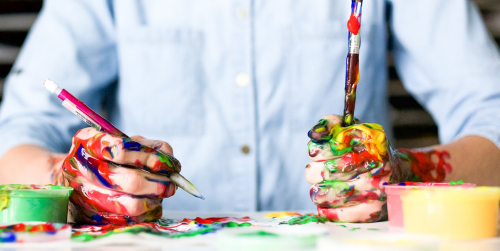
Art has been defined by so many people in so many different ways. Some may adapt the dictionary definition of art and state that it is a creative skill. Others may get quite emotional and devotedly express “Art is life; without it, I am nothing.”
“Art Therapy can help with emotional expression via non-verbal communication, because often unexpressed words and emotions are at the heart of symptoms and behaviors. Benefits can include increasing self-esteem, gaining self-awareness, improving communication, managing behavioral issues, solving problems creatively, reducing stress and anxiety, and developing social skills.” Elena Lamaak, MA, LMHC explains. Regardless of the numerous meanings, people attach to art, all of these characterizations cannot be questioned for art is a unique experience for each person. With this variety of definitions, one cannot truly define art.
One important aspect of art, especially nowadays, is its healing power. So few may be aware, but art has the potential to heal. It can aid mental disorders and restore a healthy state of mind. Art is a therapeutic activity, without a person consciously realizing it. Creativeness in therapies helps create a more vibrant experience. With this in mind, let’s ponder on about the healing power art.
It Lists Endless Opportunities For Healing

Art comes in numerous forms. Be it painting, drawing, drama, music, writing, dancing, singing…the list goes on. This different forms and mediums open the door to endless opportunities. There are a lot of channels to explore for each person—it’s a journey of discovery. And each channel provides a unique therapeutic experience for every person who explores it. “There are various uses for art therapy with regards to healing, but the benefits may surprise you if you’ve never heard of art as a form of therapy.” Douglas Mitchell, LMFT said.
It Employs A Sense Of Familiarity In Therapy Sessions
Too many clients may find it uncomfortable to sit in front of a therapist and just talk. More often than not, speaking up about your condition is a difficult task. By employing a preferred choice of therapy—be it art, or music, or whatever he might desire—these creative forms of treatment wraps the client in the sense of familiarity, eases discomfort and relaxes the mind.
It Explores The Artistic Side Of A Person
The many existing forms and mediums of art as a journey of discovery for a person exercises the creative part of the brain. This type of therapy helps in broadening perspective and exploring the imagination of a person. It might prove to be not just a technical session for the client, but a fun and exciting activity, as the creative process helps fight depression by releasing positive brain chemicals.
It Paves the way for Authentic Self-Expression

Art in therapy promotes a genuine expression of oneself. When a client works creatively in therapies, he becomes more expressive and communicative. One person can pour out his soul through art, and his actions and behavior in the activity convey honest thoughts and feelings. This helps in enhancing both the verbal and non-verbal communication skills of a person.
It Promotes Holistic Development For Everyone
Creative therapy is not just for the creative people—it is for anyone who wishes to do so. The process of this particular form of therapy improves not only verbal and non-verbal expression but also enhances the cognitive, emotional, physical and spiritual well-being of a person. It empowers a person to further their strengths and capabilities by exploring his skills.
“In the process of therapy you will likely make sense of your past and begin to understand how it affects your present.” –Dr. Mitch Keil